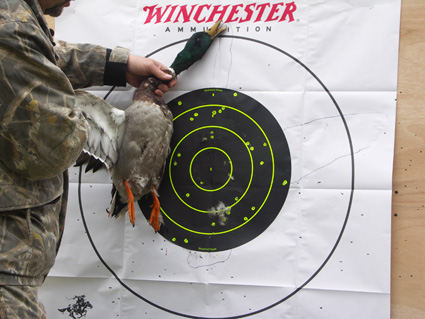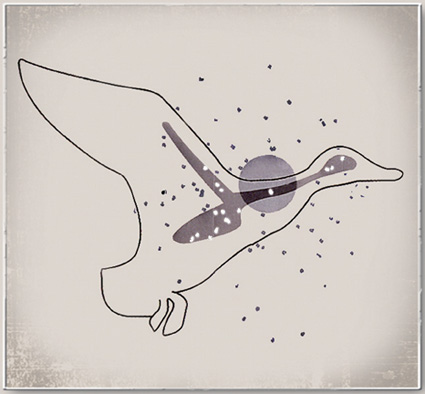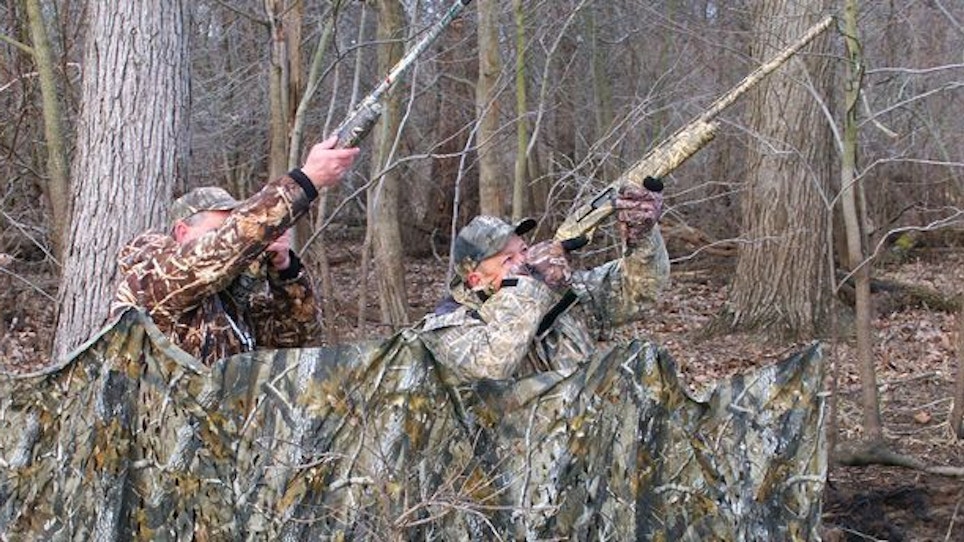Over-Choking Your Shotgun
Many duck hunters want to shoot as far as possible, so they immediately go for a full or extra-full choke designed for steel shot. They match the choke to new buffered and non-buffered steel loads with high-tech wads, or tungsten if they have the jingle. The goal: make that 40- to 60-yard shot a practical option. With today’s high-tech steel chokes and loads, this is doable, but it usually will cost you more birds than it puts in the bag.
 Most of us who spend a lot of time in a blind know that if a decoy spread is set out right and the birds cooperate, most birds are killed within 20 to 35 yards, and most shots will be crossing shots. You’ll have the odd straight-away slam-dunk shot after they flare, but if it ain’t crossing, it ain’t duck hunting. That means the shooter must lead the bird, either a little, a lot or a whole lot. And ultra-tight choked guns are not very forgiving on close shots that require a bit of lead. At 20 yards, you only have about a 15-inch pattern spread with a full choke, and even less with the extra-full. With a modified or improved, you have close to 2 feet of shot circle. That’s a lot more forgiveness on a fast crossing, usually rising, bird. And you’re not giving up that much on long shots. At 40 yards, a modified-choke spread has opened to 45 inches, while the full is 40 if your choke behaves as the charts predict. With today’s back-bored barrels and extended forcing cones, that’s not always the case, but assuming it is, is a 5-inch gain at 40 yards worth the diminished pattern in close where most of the action is? I think not. You need only see this once on a pattern board to better understand how your choke and loads are performing.
Most of us who spend a lot of time in a blind know that if a decoy spread is set out right and the birds cooperate, most birds are killed within 20 to 35 yards, and most shots will be crossing shots. You’ll have the odd straight-away slam-dunk shot after they flare, but if it ain’t crossing, it ain’t duck hunting. That means the shooter must lead the bird, either a little, a lot or a whole lot. And ultra-tight choked guns are not very forgiving on close shots that require a bit of lead. At 20 yards, you only have about a 15-inch pattern spread with a full choke, and even less with the extra-full. With a modified or improved, you have close to 2 feet of shot circle. That’s a lot more forgiveness on a fast crossing, usually rising, bird. And you’re not giving up that much on long shots. At 40 yards, a modified-choke spread has opened to 45 inches, while the full is 40 if your choke behaves as the charts predict. With today’s back-bored barrels and extended forcing cones, that’s not always the case, but assuming it is, is a 5-inch gain at 40 yards worth the diminished pattern in close where most of the action is? I think not. You need only see this once on a pattern board to better understand how your choke and loads are performing.
Stacked Loads Are Hard To Pattern
At first blush, this strategy seems to make good sense. Keep the first two in the tube of your pump or autoloader 2 ¾- or 3-inch No. 6 shot, then slip in a magnum load of No. 4s or a tungsten load for shot three in case you have to stretch one out. I’m seeing this more often in the blind. A few guns will hold a consistent pattern when this is tried, but they’re pretty rare.
This gets especially counterproductive when you use a tungsten load on the back end. Most tungsten loads don’t work well with tight (full) chokes, and while they do reach out, they do it best through modified or improved chokes. I have found this quirk just as true with 20-gauges as with 12-gauges. Your best bet, even for long shots, is to find the best patterning load out of a modified choke for use over decoy spreads, and then pattern it at 40-plus yards to see what you have to work with. If you slip a different 3 ½-inch or tungsten on the back end, you should pattern it too, and keep in mind that those heavier 1 5/8-ounce loads can be far slower than standard loads, making long shots even tougher.
 Scott Grange, director of public relations and shooting promotions for Browning, who knows his way around shotguns and duck blinds, sums it up well: “There was a day when I thought stacking loads was a smart thing to do,” he says. “I don't feel that way today. When we hear or read the term ‘magnum,’ naturally, we think bigger, faster, more powerful. Actually, a 3 1/2-inch magnum, due to its heavier payload, can be as much as 400 feet per second (fps) slower than its 3-inch counterpart. I learned years ago it is more important to shoot the same velocity (within 100 fps) ammo all the time than to stack loads. If you don’t think 300 or 400 fps makes a difference in necessary lead, you're fooling yourself. If you feel the desire to stack, then be sure to check the velocities of your ammo. To me, stacking is a distraction, and heaven knows I don't need that!"
Scott Grange, director of public relations and shooting promotions for Browning, who knows his way around shotguns and duck blinds, sums it up well: “There was a day when I thought stacking loads was a smart thing to do,” he says. “I don't feel that way today. When we hear or read the term ‘magnum,’ naturally, we think bigger, faster, more powerful. Actually, a 3 1/2-inch magnum, due to its heavier payload, can be as much as 400 feet per second (fps) slower than its 3-inch counterpart. I learned years ago it is more important to shoot the same velocity (within 100 fps) ammo all the time than to stack loads. If you don’t think 300 or 400 fps makes a difference in necessary lead, you're fooling yourself. If you feel the desire to stack, then be sure to check the velocities of your ammo. To me, stacking is a distraction, and heaven knows I don't need that!"
You might discover the shell you’re saving for the most difficult long shots is blowing the pattern, throwing your lead off, and you’re better off staying with a basic load. Only the pattern board will tell you.
Having different backup ammo (and a proven choke) for long shots with you in the bag is a good idea for days when things are slow and all you’re seeing are occasional singles or doubles up high and way out there. Make the switch and set up for that kind of shooting, but mixing loads through a single choke and having patterns hold well is rare. If you want two different kinds of performance from one gun, you need two barrels.
Don’t Believe It
Your objective is to get a feel for what’s going on downrange, and just consulting a chart that says “A modified choke will deliver this pattern with this shot” won’t cut it. That choke might have modified or improved/modified stamped on the side or grooved in the front, but it’s a best guess at best. Don’t believe everything you read.
The modified tube on my Benelli M2 delivers tighter, more uniform patterns than the full. I have two 1100s and one 870 that shoot a modified pattern with full tubes and a Browning Cynergy that delivers its most uniform results with improved cylinder in the top tube and an improved/modified (.030 constriction) in the lower barrel. Charts lie; pattern boards don’t.
Reading The Board
I don’t count holes. Instead, I hold a 30-inch cardboard circle over the pattern paper, then lightly spray paint around the edge to give me a 30-inch clear center. Then I look for density and uniformity in the spread. I want to know which choke and load combination gives me the most uniform pattern at 40 yards.
If I’m using bulk, low-cost loads I purchase by the case, making them perform and learning what they’re doing is the objective. When I find the right combination, I’ll shoot it at 20, 30 and 50 yards to see what I have to work with. After that, I slip in a 3 ½-inch or tungsten finisher and see if it’s really buying me anything. Only by seeing that clear picture of exactly what you’re sending downrange will you understand what’s really going on, and you’ll carry that image into the blind with you.
You can knock together a pattern board with four 2x4 studs, two 2x6 legs and a chunk of Celotex (black insulation board). Buy the cheap stuff, because all you’ll have left after the session is kindling. Pick up a roll of brown construction paper, a cardboard 30-inch pattern circle and a can of spray paint and spend a day poking holes in it. You’ll learn the secrets your shotgun has been keeping from you and walk away much more confident knowing what’s happening out there.






